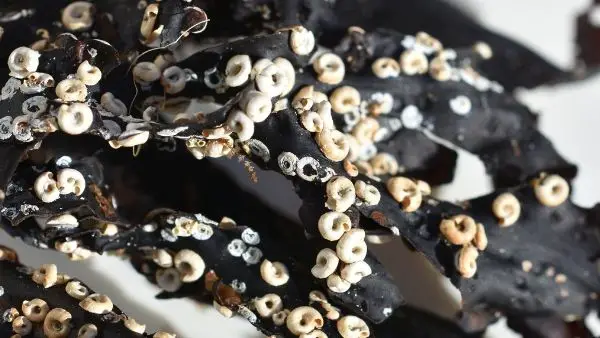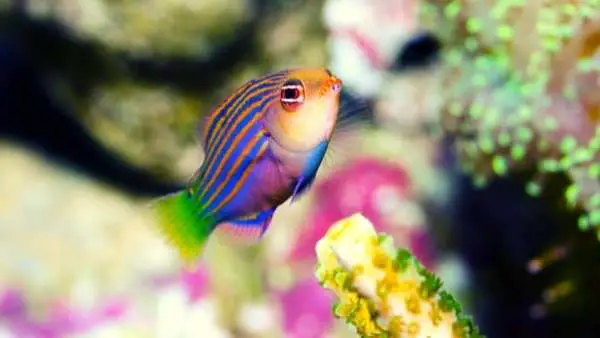First of all, when identifying critters who make rockstar tank appearances when you least expect it, it is hugely important to gauge whether or not they are good for your tank, and obviously your fish community. Fortunately, if you discover Spirorbid Worms in your tank, it is not a bad thing as these critters are considered good and actually pretty beneficial - they are the good guys.
General Information
How to Discover and Where to Find Them
If you begin to see white spirals on the glass of your tank, rocks, substrate, and powerheads, then the likelihood is you have Spirorbid Worms in your aquarium reef tank. They are tiny spiral-shaped worms and will only grow to a maximum of 2 to 3 mm in length (0.11 inches).

Behavior And Usefulness
All in all, they are harmless filter feeders, they create a small spiral shell for themselves that the worm lives in, popping out to feed every now and then, similar in characteristics to the feather duster worm. Both species of worm feed and thrive off powdered coral foods, phytoplankton & other small powder-like substances, they will also feed on uneaten fish foods, detritus, and fish waste, much like the feather duster worm, which is seriously beneficial for any aquarium tank!
Population Control
If it is only recently that you have started to encounter these critters, that is a great sign and shows that your tank is maturing and your community is becoming more established. In terms of breeding, they do mass produce initially, but eventually, their numbers will become a lot more controlled once your tank is a little more mature and isn't as rich in nutrients. It would be advised to leave them to it rather than handling the population control yourself.
Reducing the Numbers
Yes, these worms are incredibly useful to have in your tank, however, some people may not want them around, I mean, aesthetically speaking they are not the best-looking things, and sure, they are extremely helpful with many different things around your tank but it may be a little unsettling seeing them all over your tank.

So, how do you reduce the numbers? Well, there are several methods that work, we will run you through the most efficient and effective tactics when it comes to alleviating the numbers.
Reduce The Amount You Feed
First of all, you should try and reduce the amount you are feeding your fish and coral, especially if you are using coral powders. This shall reduce the amount of food that is readily available for your community, you should also look at melting or defrosting any of the frozen food you feed some of your tank members by removing the liquid. It is all about removing extra food particles and reducing the amount in the water.
Manual Removal
The second, and perhaps less humane method to removing them is simply by manually removing them. Sure, it is probably the best way of getting rid of them at once, but if your tank remains a brilliant environment for them, they will return. The best way of manually removing them is by using a tool to scrape them off the glass and potential rocks.
Introducing Predator Fish
A common question posed by hobbyists wanting to remove the worms is "do they have any predators?", which is a smart question and idea if you wish to remove the worms whilst providing some food for one of your aquarium fish, crab, snail, or whatever else. While there is no direct predator that has proven to only eat Spirorbid Worms, people have had success with these:
The Six Line Wrasse - despite being a good choice for efficient elimination of your worm infestation, the Six Line Wrasse is a choice that must be made after careful consideration. They will do the job well, but have been known to be aggressive, and do not play fair with other tank mates, often becoming the tank bully. There is also no 100% guarantee that they will even eat the worms.

Hermit Crabs - hermits are a brilliant option, not only are they a fun and harmless addition to most communities, but they are brilliant for protecting rock work, and will likely pick them off any rockwork and eat them if they see them! However, they are not the best for when these worms find themselves on the glass of your tank, for obvious reasons.
Peppermint Shrimp - just like the Hermit Crabs, these shrimp are useful for picking them off the rock faces as they breeze past, however, they are not active hunters of the worm and will not go out of their way to find them. In addition to this, they will likely not pick them off the glass, which will not completely alleviate the problem.
Conclusion
In conclusion, these critters are the good guys, and, for the most part, can and maybe even should be left to their own devices. I say this because they do more good than harm, sure, they don't look amazing and aren't filled with rainbow-like bright coloration, but they do look pretty cool and somewhat creepy if that is what you like going for in your tank!
With the work they put in via cleaning up the tank for unwanted bacteria and excess food waste, which inevitably make your tank extremely dirty and results in all sorts of diseases and other problems for your fish, I believe they are a great addition for aquariums and fish communities. However, the beauty of being a hobbyist is that everything is down to you, and at the end of the day, it is your decision. If you decide to remove them, we have still provided many ways to remove them.

